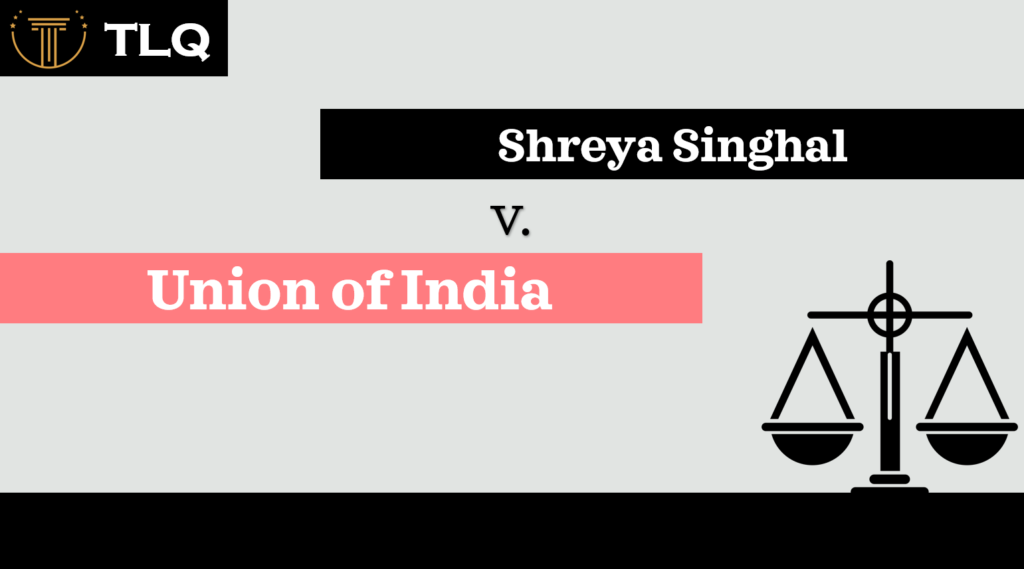Published On: 4th August 2025
Authored By: Samriddha Ray
St Xavier’s University, Kolkata
Abstract
The digital age has brought with it an unprecedented rise in cybercrime, calling for modern, tech-savvy legal frameworks. The Bhartiya Nyaya Sanhita, 2023 (BNS 2023), which replaces the colonial-era Indian Penal Code, 1860, claims to address the evolving threat landscape, especially in cyberspace. This article examines the efficacy of the BNS 2023 in combating cybercrime and enabling digital policing, with critical insight into its key provisions, comparisons with earlier frameworks, and recommendations for robust enforcement.
1. Introduction
Cybercrime has emerged as one of the most complex threats of the 21st century, involving offences such as identity theft, phishing, cyberstalking, data breaches, ransomware attacks, and cyberterrorism. India’s existing legal framework, mainly the Information Technology Act, 2000 (IT Act), while useful, was increasingly seen as insufficient given the rapid digitisation and growing sophistication of cybercriminals. Recognising this, the Government of India introduced the Bhartiya Nyaya Sanhita, 2023, aiming to provide a comprehensive legal response to both traditional and emerging crimes, including those perpetrated through digital means.
2. Evolution of Cybercrime Laws in India
Prior to BNS 2023, cyber offences were mainly dealt with under:
- The Indian Penal Code, 1860: Sections on cheating, defaation, forgery, etc., were stretched to cover cyber contexts.
- The Information Technology Act, 2000: Introduced a specific framework for digital offences like hacking (s 66), identity theft (s 66C), and data breach (s 72A).
However, the IT Act was often criticised for:
- Lack of clarity in defining newer forms of cybercrime;
- Inadequate penalties;
- Jurisdictional ambiguities;
- Procedural inefficiencies in investigation and prosecution.
Information Technology Act 2000, ss 66, 66C, 66E, 72A
3. Key Cybercrime Provisions in the Bhartiya Nyaya Sanhita, 2023
The Bhartiya Nyaya Sanhita, 2023 marks a significant shift in the treatment of technology-based offences. Several provisions have been introduced or revised to meet contemporary challenges.
3.1 Section 111: Identity Theft and Cyber Fraud
Section 111 criminalises the use of digital platforms to impersonate another person with the intent to deceive, defraud, or cause wrongful loss or gain. It covers activities such as phishing, fake social media profiles, and deepfake misuse.
Bhartiya Nyaya Sanhita 2023, s 111
This provision aligns with international trends, such as the UK Fraud Act 2006, which penalises fraud by false representation.
Fraud Act 2006 (UK), s 2
3.2 Section 113: Publication of Sexually Explicit Content
Section 113 punishes individuals who circulate or publish intimate images or videos of others without consent. This targets the growing menace of revenge porn and morphing.
Bhartiya Nyaya Sanhita 2023, s 113
This is a direct improvement over IPC’s outdated Section 292 and supplements IT Act’s Section 66E.
3.3 Section 115: Cyberterrorism and National Security
This section deals with the use of digital means to threaten national security, including disruption of essential cyber infrastructure and incitement through online platforms.
Bhartiya Nyaya Sanhita 2023, s 115
This provision borrows its essence from global instruments such as the Budapest Convention on Cybercrime, although India is not yet a signatory.
Convention on Cybercrime (Budapest Convention), ETS No 185
3.4 Section 116: Deepfake and Synthetic Media Abuse
For the first time, BNS introduces a framework to penalise the non-consensual use of deepfake technology to harm an individual’s reputation, dignity, or safety.
Bhartiya Nyaya Sanhita 2023, s 116
This is a forward-thinking provision that anticipates a key challenge in digital rights and misinformation.
4. Enhancing Digital Policing Through Legal Reform
Apart from punitive measures, BNS 2023 also aims to improve digital policing capabilities by simplifying procedural laws and enhancing investigative powers.
4.1 Integration with Bhartiya Nagarik Suraksha Sanhita (BNSS), 2023
The BNSS 2023, replacing the Criminal Procedure Code (CrPC), facilitates e-FIRs, electronic evidence collection, use of AI and forensic tools, and video trials — all essential for handling cybercrime efficiently.
Bhartiya Nagarik Suraksha Sanhita 2023, ss 173, 180
These provisions address the historical gaps in the chain of custody and admissibility of digital evidence, an area of persistent concern in cyber prosecutions.
4.2 [1]Role of Technology and Capacity Building
The government has proposed the use of Digital Police Portals, Crime and Criminal Tracking Network & Systems (CCTNS), and Facial Recognition Systems (FRS), which need legislative backing and constitutional safeguards.
The Supreme Court in Justice K.S. Puttaswamy v Union of India recognised the right to privacy as a fundamental right, making it essential that surveillance mechanisms are balanced with individual liberties.
Justice K.S. Puttaswamy v Union of India (2017) 10 SCC 1
5. Critical Analysis and Limitations
5.1 Positive Aspects
- Specificity: BNS provisions like s 111 and s 116 offer precise legal definitions of new-age cybercrimes.
- Alignment with global norms: Provisions reflect international cybercrime standards.
- Digital admissibility: Coupled with BNSS 2023, it supports procedural integration of electronic evidence.
5.2 Concerns and Gaps
- Overlap with IT Act: There is potential jurisdictional conflict unless the IT Act is harmonised accordingly.
- Lack of dedicated cyber police units: Laws are ineffective without trained enforcement personnel.
- Surveillance risks: Provisions under digital policing may enable state overreach without robust data protection laws. The Digital Personal Data Protection Act, 2023, must work in tandem with BNS to uphold constitutional rights.
Digital Personal Data Protection Act 2023
- No clear framework for cross-border cybercrime: With data hosted in multiple jurisdictions, India’s lack of participation in treaties like the Budapest Convention may limit international cooperation.
6. International Comparison
6.1 United States
The Computer Fraud and Abuse Act (CFAA) covers unauthorised access, data theft, and cyber extortion, offering strong enforcement mechanisms via federal agencies.
Computer Fraud and Abuse Act 1986, 18 USC § 1030
6.2 United Kingdom
Under the Computer Misuse Act 1990, the UK criminalises unauthorised access and modification of data. Recent reforms include explicit recognition of ransomware and state-sponsored hacking.
[2]Computer Misuse Act 1990 (UK)
Compared to these jurisdictions, India’s BNS 2023 reflects improved sophistication but requires corresponding infrastructure and international cooperation frameworks.
7. Recommendations
- Harmonise BNS with the IT Act and DPDP Act to avoid overlaps and contradictions.
- Strengthen capacity building in law enforcement through digital forensics training.
- Establish dedicated cybercrime units at the national and state levels with investigative autonomy.
- Join international treaties like the Budapest Convention to facilitate cross-border legal assistance.
- Ensure judicial oversight and privacy protections in all digital policing activities.
8. Conclusion
The Bhartiya Nyaya Sanhita, 2023 is a forward-looking legislative instrument that aims to modernise India’s criminal law and make it responsive to contemporary threats like cybercrime. By codifying offences such as deepfake misuse, cyber fraud, and digital impersonation, the BNS offers a structured approach to digital justice. However, its success will ultimately depend on coherent implementation, inter-agency coordination, judicial sensitivity, and respect for constitutional rights. As India transitions into a data-driven economy, cyber law must continue evolving to protect both security and liberty in the digital age.
[3]Cyber Crime is a growing phenomenon nowadays; it impacts the society in a number of ways that have a drastic and an adverse impact on the common people i.e. the Citizens of the Indian Territory. The Increase in Cyber Thefts, Cyber-bullying, identity theft and a number of fraudulent activities have been on a rise in the globalised economy of India. Today a man’s exposure to online activities have increased, be it online marketing, investing in stocks and mutual funds, paying the bills etc.
Moreover, the Increase in Crimes Online may even lead to psychological harm and may lead to various social and political repercussions and side-effects.
In the Digital Age while people are making use of more sophisticated mediums and technologies it is in a way contributing to Crimes related through online medium. The attackers while employing various ways to attack the people on the other side of the computers. This may involve phishing, hacking, thefts related to one’s identity, leaking secretive information and destroying or harming an individual’s social repute.
As a preventative measure individuals may incorporate strong digitised passwords so that it is difficult to break through their Technologically Equipped Devices. Apart from it a two-factor authentication should be employed to preserve and protect the contents of their devices. Also, it is very important for them to consistently back up their technological devices and also at the same time sensitize them with the safety and precautionary measures that they should inhibit in this tech-savvy and tech-regulated world. The Content Creator in order to protect their technologically built assets may secure it with Creator Insurance and in this way, they would be able to protect themselves from any incurred financial losses. This type of Insurance has several added advantages and benefits with it including legal fees, reimbursements and several costs associated with legal claims, protecting Intellectual property Rights etc.
The Need of the Hour is to not only educate and sensitize oneself with the adversities of Cyber-Crime but also to regularly update oneself with the different softwares and its mechanisms which completely tend to surround the market with. It is crucial to empower Cyber-Security and Training to be able to establish practises, techniques and measures which will help to hold the perpetrators at fault. Individuals, Businessmen and Business Firms and the Governments should work in a Collaborative Manner to eradicate the risks associated with the crime.
- Implementing Fake Profiles and incorporating mechanisms like Cat-Fishing
This usually refers to creating a fake and an artificial profile of others. This leads to deceiving others for any wrongful gain, this may be any form of financial loss or any form of uncensored content. It may be stealing private photographs of individuals, capturing their private moments which is also leading to intervention into the privacy of people thus violating their basic fundamental right which is encompassed under Article 21 of the Indian Constitution. This may be a form of emotional and sexual exploitation of the individuals which will have an everlasting impact in their lives, thereby negatively affecting them.
- Cyber-bullying and Extortion after the trust is gained from the Consumers in the E-Interface
These days with the coming of this trend online shopping has become a bane, since many frequent shoppers are facing immense fraudulent issues, sometimes they experience harassing phone calls, in other instances there appears otp in their mobile phones which pose threat to them, on answering to the otp’s they face severe financial losses. Information may be extorted; this would mean that the online sites may capture and record important and sensitive information of the consumers who are not aware of this in the very first place and by this way they become victims of cyber-bullying.
In this way it may also lead to the company’s loss in revenue, may lead to a negative impact to their reputation that they have earned over the years, may lead to crashes in their monetary returns and overall profit ratio.
Gaining trust is quite very easy via online platforms these days, the customers are getting cheated since mostly they are not informed about the pros and cons of tele-shopping or online shopping, secondly the moment they save their debit and credit card numbers for future uses a chunk of their personal information becomes highlighted and the hackers utilise this advantage to engage into fraudulent practices, one of them being cyber-bullying.
- Cyber-Stalking and the ways in which it can be eradicated from the society after underlining the root cause.
Stalking via the online platform would mean a constant check on the day-to-day activities of the consumers, keeping a check on their whereabouts on screen, a live tracking of their Activities which may include the sites which they often surf and end up buying from it.
Abuse may be both physical and emotional in nature. This may include Verbal Abuses or may include stalking over the profiles of the consumers. Teenagers are at a high risk to fall prey to the cons of Cyber-Stalking. 2 The Consequences of this are life-threatening ranging from stress, anxiety, depression etc and it may have an everlasting impact on the individual’s life.
In various e-platforms and social platforms, for example Instagram, Snapchat, Twitter people may be stalked, this may be posting uncensored pictures and comments on these networking sites, shaming people by cat-calling names and by damaging their social repute.
For this very reason the Victims may face a tremendous amount of social isolation and they may feel unsafe.
Few ways which many be incorporated to prevent Cyber-Stalking are by securing the WIFI and the Network Connectivity, by incorporating a more Strong Password which can preserve and protect the Individual’s Sensitive Data and Personal Information, to be able to keep a track of the devices upon which one exercises control over, to log out and delete the searching history each time an individual enters into a new site so that the traces of his whereabouts are completely removed. It primarily pertains to sending unwarranted emails to specific individuals, contents used in a blog which may be harming one’s social as well as familial reputation, posting uncensored images to blackmail an individual etc.
This may be addressed through proper counselling mechanisms with the offenders, by spreading information regarding Cyber-Bullying, by educating today’s youth thereby raising awareness in the society in this regard. This Mechanism may have negative consequences such as leading to emotional distress, loneliness, exacerbating physical ailments which may be linked to the mental ailments as well.
Addressing Cyber-Bullying requires methods of Collaboration with the units of Society including that of the Parents, the Educators and the Professionals who are well trained and employed to carry out the activities in this regard. Parents need to be involved in this process to keep a track on their children’s activities online so that they do not fall prey to such activities. Educators would be considered to be of prime importance as they would raise awareness by educating the children, the adolescents and that of the adult population about cyber-bullying and by also helping the people who are targeted to find adequate relief to sustain themselves.
- [4]Faking of AI Incorporated Technologies and Softwares
AI may not always help in mastering a perfect solution to the many problems individuals face. Many Technologies may not have in-built AI integrated mechanisms they may act as a dummy or may fake it’s identity. This may be profound in many chat-bots and Ai which may pretend to have the features of an AI, but in reality, may not have it, this is probably the point in which the consumers mistake the software-integrated technologies to have in-built AI Mechanisms. It is no longer difficult for the school going children to get access to generative AI Tools and technologies. Many of them are easily advertised in the social networking sites to which these students hold an account to. The Terms and Conditions in this software usually violate itself with regard to their uses.
Bibliography
- Bhartiya Nyaya Sanhita, 2023
- Bhartiya Nagarik Suraksha Sanhita, 2023
- Digital Personal Data Protection Act, 2023
- Information Technology Act 2000
- Justice K.S. Puttaswamy v Union of India (2017) 10 SCC 1
- Fraud Act 2006 (UK)
- Computer Misuse Act 1990 (UK)
- Computer Fraud and Abuse Act 1986, 18 USC § 1030
- Convention on Cybercrime (Budapest Convention), ETS No 185
- Ministry of Home Affairs, “Guidelines for Digital Policing” (2023)
- Supreme Court e-Committee, “Manual on Digital Evidence” (2022)
[1] Convention on Cybercrime (Budapest Convention), ETS No 185
[2] Computer Misuse Act 1990 (UK)
[3] Computer Fraud and Abuse Act 1986, 18 USC § 1030
[4] Supreme Court e-Committee, “Manual on Digital Evidence” (2022)




